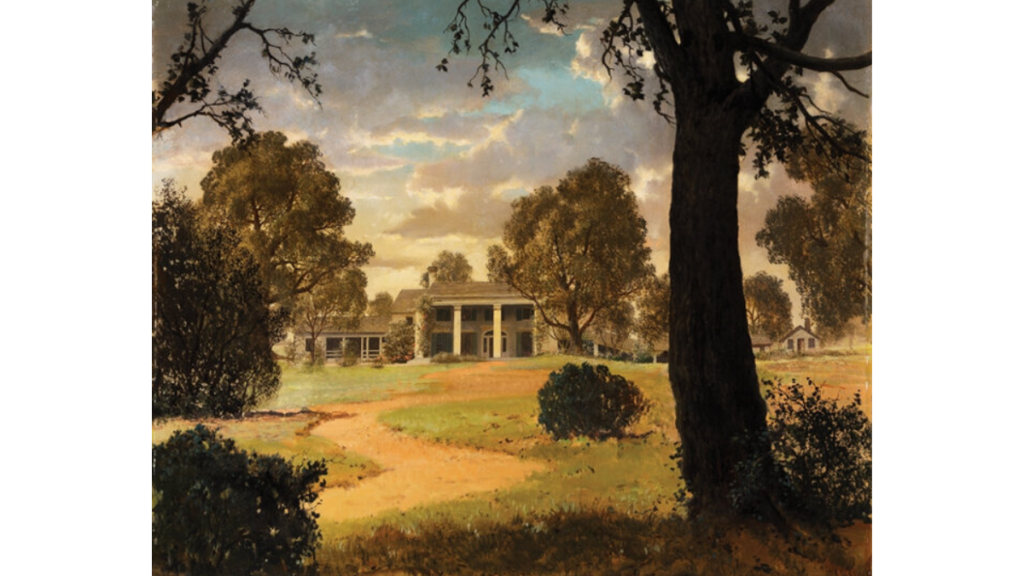I love objects that exemplify the magic of movie making. Perhaps the greatest examples are matte paintings.
Featured image: Original Fitch Fulton screen-used matte painting of “Tara” from Gone With the Wind used in the elaborate opening title sequence. Make offer to owner: $405,000.00 or more.
LOT #1414
Everyone remembers the iconic final scene in Raiders of the Lost Ark where, following Indy’s meeting with the “bureaucratic fools,” a government worker carts the Ark of the Covenant through a colossal, top secret government warehouse housing tens of thousands of crates as far as the eye can see. That illusion was made possible through the use of a matte painting. An artist at George Lucas’s Industrial Light & Magic hand-painted the detailed, vast warehouse surroundings and the live-action footage of the government worker pushing with the Ark down the central aisle was seamlessly composited to create the illusion. By definition, a matte painting is a painted representation of a landscape, set, or distant location that allows filmmakers to create the illusion of an environment that is not present at the filming location. Since nearly the beginning of movie making, this technique has been utilized for sequences that would otherwise be impossible or too expensive to create. Other notable examples of matte paintings include the distance shots of the Emerald City in The Wizard of Oz, Skull Island in King Kong and Xanadu in Citizen Kane. By the mid-1980s, computer generated imaging began to eclipse the old technique of painting on large panes of glass or Masonite, rendering the hand-painted mattes relics of the past. Over the years, we’ve handled scores of matte paintings and I always jump at the opportunity of taking them on consignment to offer to the ever-expanding entertainment memorabilia market. Indeed, some can be quite large and a bit cumbersome, but I always keep a soft spot in my heart for them. They are intrinsically stunning works of art, but they remain keystone elements responsible for taking the audience one step beyond, to places that stretch our very imagination.
